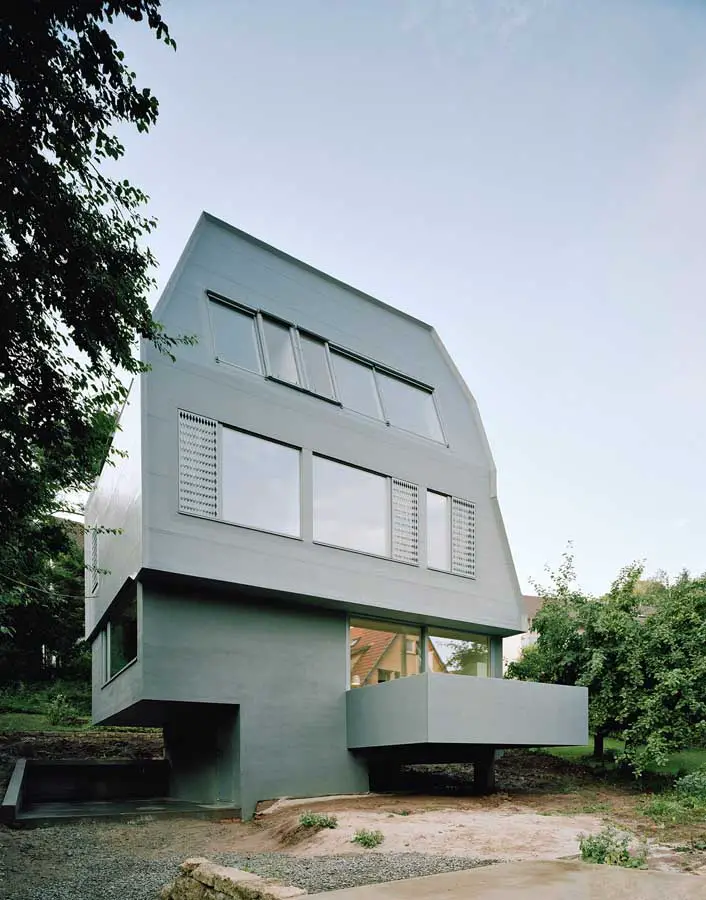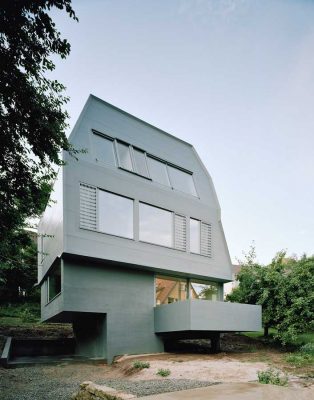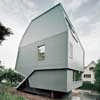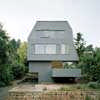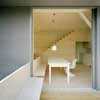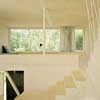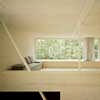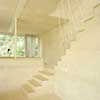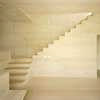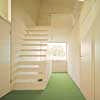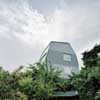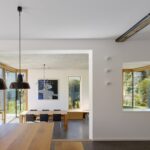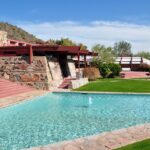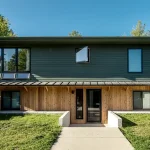JustK, Tübingen Building, Haus Baden-Württemberg, New German Home
JustK, Tübingen, Germany
Residence south of Stuttgart, Germany design by architekten martenson und nagel · theissen
21 Jun 2011
JustK Tübingen
Location: Baden-Württemberg, Germany
JustK – Living space for 2 adults and 4 children in Tübingen
Design: architekten martenson und nagel · theissen
Photographs : Brigida González
Site and commission
This 365 square-metre site is located in Tübingen; on a south-facing slope with a view over the city and of Tübingen castle. The 1960s development plan stipulates a specific position for the house on the site as well as “insertion into the surroundings” according to §34 of the Federal Building Code.
The client commissioned the design of a family home that would provide passively heated living space for two adults and four children. Use of energy efficient passive house technology, natural application of materials and prudent use of the resources at hand, make the building sustainable. The potential adaptation of the house to the family’s living situation was an important aspect thereof.
The question is, what is “good” living space? What defines it and what does one really need? These issues guided us in our approach to the layout of the house, which has been efficiently designed to optimally deliver maximum use of space, functionality and flexibility. We strove to create outstanding spatial quality using a minimum of materials. Imaginative overlapping of spatial areas and uses were designed to give the inhabitants a feeling of spaciousness, manifold atmospheres and various realms of possibility—despite minimised living area.
Envelope
The parameters of a limited-sized site, distance spacing regulations, and ample living space for six people, led the building to grow upwards in tower-like fashion. JustK relates to the surrounding grey 1920s tuff buildings in a contemporary manner through its compact envelope and defined roof volume.
The swing of its hipped roof and its multiply-kinked shape derive on the one hand from a desire to create maximum spatial volume with minimum distance spacing, which the 70° angle facilitates in adherence to state building regulations, and on the other hand from a request by the neighbours to keep the view of Tübingen Castle unimpeded—under which conditions they sold the site.
Roof Cladding
The top and roof level of the house has been clad in a “southwester hat” of roof sheeting to provide protection from wind and weather. Similar to exterior “seams”, the roof sheeting meets to form ridges at the edges, these have been welded together to stand out from the water surface. This interpretation of the ridge seal accentuates the envelope of this membrane-covered warm roof. A drainage edge on the eaves guides away the rainwater that falls on the roof cladding, just like the brim of a hat.
Prefabrication, Structure, Surface Treatment
The structural physical demands on passive houses, their short construction period as well as sustainability considerations, all culminated in a decision to build this house in solid wood, optimally using the potentials of prefabrication. The whole building consists of 136 elements, which were fabricated with notches for carpentry and joinery as well as with drill holes and grooves for installation of the electrics.
Wood is the main material to be used consistently throughout the structure and interior surfaces; as a renewable raw material it was chosen not least for its favourable energy balance. To keep costs down, the wooden surfaces in the common rooms have been designed in “refined shell construction.” The industrial surface of these cross-layered wooden elements have been sanded down, bucked and soaped to preserve the light character of the wood.
Splittable
One can become two
Sustainable and flexible; the house can be split into two living units with separate entrances without much effort should the family situation change to require that. The total area of the house is 138 square-metres; one unit would measure 81 squaremetres and the other 57. In the warmer months of the year, this living space can be extended by the 12 square-metre balcony and the 23 square-metre forecourt.
Ground floor Climate Zone
The staggered main living space creates various room heights which zone the ground floor and automatically create different climate zones in winter. Cold outside air remains trapped in the lower entrance area while moderate temperatures prevail in the kitchen-living room and the sitting room higher up is warmest.
photographs are by Brigida González – www.brigidagonzalez.de / mail(at)brigidagonzalez.de
JustK – Tübingen Building images / information from architekten martenson und nagel · theissen
Location: Tübingen, Germany
Architecture in Stuttgart
Contemporary Buildings in Stuttgart
Stuttgart Architecture Designs – chronological list
Architecture Walking Tours by e-architect
Stuttgart Architecture Walking Tours
architekten martenson und nagel · theissen are based in Stuttgart, Germany and led by sonja nagel &jan theissen
House am Oberen Berg, north east Stuttgart
Architect: Alexander Brenner Architekten
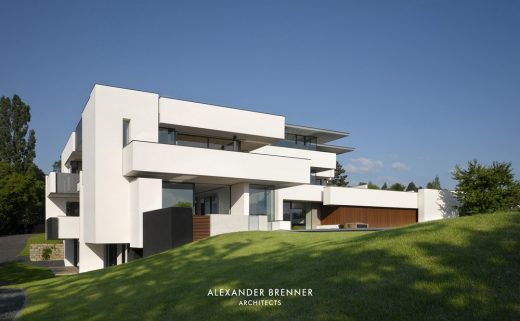
photograph : Zooey Braun, Stuttgart
House am Oberen Berg
Stuttgart Buildings – Selection
Porsche Museum
Delugan Meissl
Porsche Museum Stuttgart
Mercedes-Benz Museum
UN Studio Architects
Mercedes Museum Stuttgart
Another recent German house on e-architect:
Haus R, Schondorf, Lake Ammersee, Bavaria
Bembé Dellinger Architekten
Bavarian House
Comments / photos for the JustK – Tübingen Architecture page welcome

